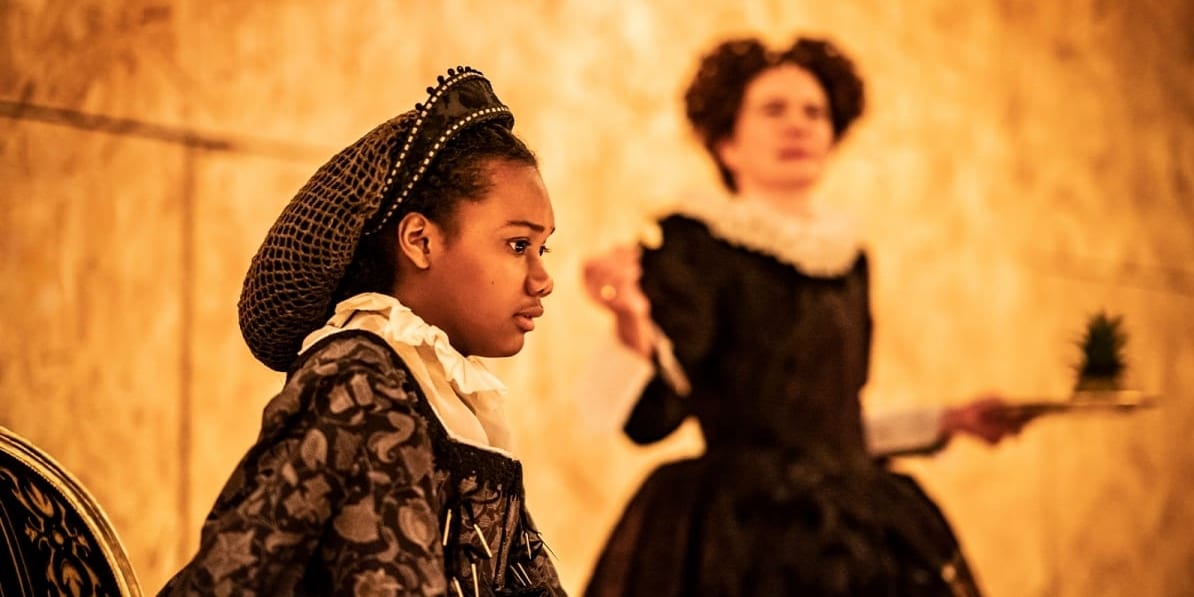“I want to go home but I don’t know where it is,” says a young, exasperated Princess Elizabeth played by Nina Cassells from almost pitch darkness. The Globe’s Wanamaker Playhouse is candle-lit, and in this scene, all the candles are snuffed but the one carried by Swive’s antagonist William Cecil (Michael Gould). Falsely accused of having an affair, Elizabeth chooses to take control of her narrative, wittily trampling through her opposition in a whirlwind ascent to England’s throne. When she becomes queen, Cassells switches out with Abigail Cruttenden, who plays Queen Elizabeth I—the cast is sparse, and all but Gould play several roles.
Swive is a powerful piece of feminist contemporary theatre that subverts semi-divine, mythical, and overly-sexual representations of Elizabeth I by lingering on her humanity. She literally begins the play by pulling down the curtains that had decorated the backstage, rightfully telling us that the “cozy, campy” Elizabethan feel of the theatre is engineered “bullshit” made only recently. By doing this she holds up the idea of theatrical representation to scrutiny. In order to arrive at and remain in power within patriarchal 16th century British society, she trumps up the narrative of her divinity, purity, and prestige, even wearing a strategically showy and self-referential dress and an extravagantly expensive crown. Swive presents an Elizabeth who uses these symbols to her advantage while at the same time critiquing the society that gives these symbols power.
Elizabeth is a powerful figure in Swive, but she is also a tragic figure, trapped especially by restrictions on love. In her youth, she confusingly flirts by reciting the Catholic Church’s Words of Institution (“Take this, all of you, and eat of it: / for this is my body which will be given up for you”). In her adulthood, she must keep herself separated from the person she loves to preserve her power. Wise to the world she lives in, she tries to initiate Katherine Grey (also played by Nina Cassells), a cousin in whom she sees an echo of herself, into her power games—but is horribly disappointed when Katherine falls prey to the traps that Elizabeth had evaded. These scenes are rendered with ambiguity and non-judgement, so that what we see is a complex and imperfect—but enormously impressive—Elizabeth.
Swive re-presents Queen Elizabeth I’s story with at its core the human Elizabeth, surrounded by bullshit that she deals with heroically and not-so-heroically. It is equal parts inspiring, wittily funny, and heart-rending drama that tells of a complicated monarch who eschewed marriage and rejected societal expectations, and in so doing, brought about national stability and a long period of peace. The effect of Swive is to celebrate Queen Elizabeth I while interrogating the patriarchal world she lived in. “Together, we get to rewrite things,” she says—a careful reminder that history is like clay, and we get to shape it.

